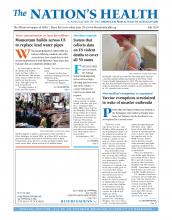Media coverage of mass violence can cause distress in people who are exposed to it. That anxiety can drive them to consume more trauma-related media in the future, causing even more distress, a recent study shows.
Published in April in Science Advances, the study tracked more than 4,000 people over a three-year period from 2013 to 2016. The study began days after the 2013 Boston Marathon bombing, in which three people were killed and hundreds more were injured. The research was designed to track immediate emotional responses and responses to the bombing over time. However, after the 2016 Pulse nightclub shooting in Orlando, in which 49 people were killed, the study was also able to gauge participant responses to that event. Both incidents were extensively covered by media.
“The cycle of media exposure and distress appears to have downstream implications for public health,” Rebecca Thompson, lead author of the report, said in a news release. “Repeated exposure to news coverage of collective traumas has been linked to poor mental health consequences — such as flashbacks — in the immediate aftermath and post-traumatic stress responses and physical health problems over time, even among individuals who did not directly experience the event.”
Roxane Cohen Silver, PhD, a professor of psychological science, medicine and public health at University of California-Irvine and senior author of the study, has examined community trauma since the terrorist attacks on Sept. 11, 2001. Her prior research indicates that the relationship between consumption and distress is not only cyclical, but cumulative.
“It’s important that the public should be aware of the consequences of exposure to violence,“ Silver told The Nation’s Health. “There’s very little benefit to consuming this type of media and it appears that it can have very negative effects.”
Consuming media on mass trauma can cause acute post-traumatic stress symptoms, the study said. Such stress was linked to more
worry about future mass violence incidents among participants and to increased attention to media coverage of mass violence incidents.
“Past collective trauma may sensitize individuals — that is, make them more emotionally responsive — to media coverage of future events, resulting in heightened distress and worry following subsequent media exposure,” the study said. “This heightened distress may also lead to increased attention to media coverage of future events.”
People who are exposed to human-caused disasters such as mass violence through repeated media exposure are at risk for developing emotional distress, according to the Substance Abuse and Mental Health Services Administration. SAMHSA says that the 24-hour, repetitious nature of the news cycle can be an obstacle to coping and moving on from trauma, and advises limiting news exposure for those affected by it.
Media also has a role to play in limiting exposure, according to the new study. Researchers called for traditional media outlets to be measured in coverage of mass violence, such as offering strictly informational accounts as opposed to “lengthy descriptions of carnage.”
Silver noted that the changing media landscape places increased responsibility on people to measure their intake of mass trauma-related media. While people in the past received news mainly through TV and print media, the internet and social media have increased opportunities for exposure.
In the 24-hour period following the May killings of more than 50 people at a mosque in Christchurch, New Zealand, Facebook removed 1.5 million uploads of the video footage of the attack. In the October Tree of Life Synagogue killings in Pittsburgh, which took the lives of 11 people, the shooter used social media to post antisemitic messages before his attack. And in April, the shooter who killed one person at a synagogue in Poway, California, posted a trail of antisemitic messages online and attempted to livestream his attack.
“We’re noticing increased availability to very graphic images that can be quickly posted on social media and then widely distributed by the public,” Silver said. “Violence can go viral.”
For more information on the study, visit https://advances.sciencemag.org/content/5/4/eaav3502.
- Copyright The Nation’s Health, American Public Health Association









